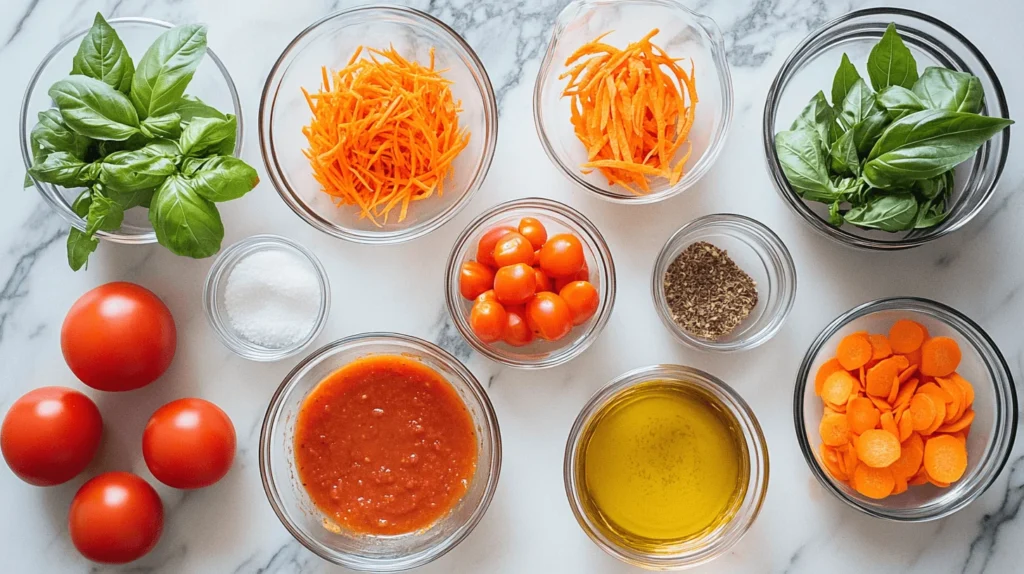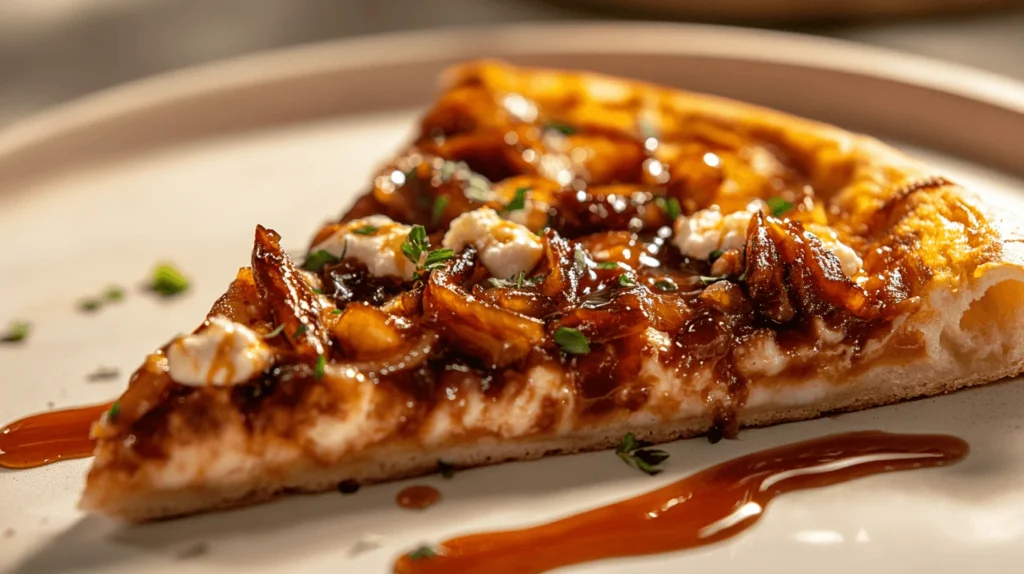Pizza is undeniably one of the world’s favorite foods, but have you ever stopped to ponder the role of sweetness in pizza sauce? Some folks believe a touch of sugar balances the acidity of tomatoes, while others argue it strays from authenticity. In this article, we’ll dive into the history, science, and preferences surrounding this heated debate. Whether you’re a fan of sweet pizza sauce or a purist who prefers a more traditional flavor, this guide will help you understand and even customize the perfect sauce to suit your taste.
Let’s start by exploring why sweetness became such a hot topic in pizza sauce.
Understanding the Role of Sweetness in Pizza Sauce

Historical Evolution of Pizza Sauce
Pizza sauce as we know it has its roots in Italian cuisine, where simplicity reigned supreme. Traditionally, sauces were crafted with just a handful of ingredients: ripe tomatoes, garlic, olive oil, and herbs. These sauces were fresh, tangy, and robust, with no added sugar.
However, as pizza spread globally, regional adaptations brought about changes in flavor profiles. For example, in New York-style pizzas, sugar was added to suit broader palates. Over time, this slightly sweet undertone became a hallmark of certain styles, sparking a divide between sweet and savory sauce enthusiasts.
The Science Behind Sweetness in Sauces
Adding sweetness to pizza sauce serves a practical purpose. Tomatoes are naturally acidic, and a dash of sugar helps neutralize that sharpness, creating a balanced flavor profile. For those seeking balance, using a touch of natural sweeteners like honey or carrots can yield a rich, vibrant sauce without relying on refined sugar.
Alternatives like roasted peppers or caramelized onions provide similar results, ensuring the sauce remains flavorful without excessive sweetness.
Perspectives on Sweet Pizza Sauce
Advocates for Sweet Sauce
There’s no denying that many people enjoy a hint of sweetness in their pizza sauce. For these fans, a slightly sweet sauce does more than just balance flavors—it enhances the overall experience. Sweet sauces often complement tangy toppings like olives or pepperoni, creating a harmonious taste that appeals to diverse palates.
But why do so many prefer this style? Some argue that sweetness evokes a sense of comfort, reminding them of nostalgic homemade pizzas. Others appreciate how sugar mellows the acidity of tomatoes, giving the sauce a smoother, more refined finish. After all, isn’t pizza about enjoyment? For those who answer “yes,” sweetness feels like the perfect touch.
It’s also worth noting that sweet pizza sauces dominate the menus of many popular chains. These establishments cater to the general public, so a sweet-leaning sauce is a safe, crowd-pleasing choice.
Critics of Sweet Pizza Sauce
On the flip side, many purists believe that sweetness has no place in pizza sauce. For them, the question “Is pizza sauce supposed to be sweet?” has a clear answer: “Absolutely not!” They argue that traditional pizza sauce should highlight the natural tartness of tomatoes without masking it with sugar.
Critics of sweet sauce often complain that it tastes too artificial or resembles ketchup more than pizza sauce. They also point out that sugar can overpower the delicate flavors of herbs like basil and oregano, which are essential to authentic Italian recipes.
Interestingly, this debate is more than a matter of taste. Health-conscious individuals often shy away from sweetened sauces, concerned about hidden sugars in their diet. For these critics, a bold, savory sauce feels more wholesome and satisfying.
Customizing Pizza Sauce to Your Taste

Ingredients That Impact Sweetness
The beauty of homemade pizza sauce lies in its versatility. Whether you’re team sweet or team savory, you can tweak the ingredients to create your perfect flavor profile. The most obvious way to adjust sweetness is by adding—or omitting—sugar. White sugar, brown sugar, or even honey can lend a sweet note, while grated carrots provide a natural, subtle sweetness.
Beyond sugar, the choice of tomatoes makes a difference too. Certain varieties, like San Marzano, are naturally sweeter and less acidic. By selecting the right tomatoes, you may not need to add any sweetener at all!
Adjusting Acidity and Sweetness
Striking the right balance between acidity and sweetness is the ultimate goal for many home cooks. If you find your sauce too tart, start with a teaspoon of sugar and adjust to taste. Alternatively, you can use ingredients like roasted red peppers or caramelized onions to add sweetness without using refined sugar.
On the other hand, if your sauce feels overly sweet, a splash of vinegar or lemon juice can bring back some acidity. Don’t be afraid to experiment! A pinch of extra salt, garlic, or herbs can also offset sweetness and add complexity to your sauce.
Regional and Style Variations in Pizza Sauce
New York-Style Sauce
New York-style pizza sauce is famous for its balanced flavor profile. This sauce is neither too sweet nor too tart, aiming for a harmony of acidity, sweetness, and herbaceous notes. The sweetness often comes naturally from tomatoes, though some recipes include a pinch of sugar to enhance the sauce. Fans of this style enjoy its versatility, as it pairs well with a variety of toppings.
Notably, this style asks the question, “Is pizza sauce supposed to be sweet?”, with a nuanced approach. The answer lies somewhere in between—sweetness is welcome but only when it complements the boldness of the other flavors.
Italian Authenticity
Traditional Italian pizza sauces often skip added sugar entirely, relying on the natural sweetness of tomatoes. Simplicity is the hallmark of Italian cuisine, and these sauces typically feature ripe tomatoes, olive oil, garlic, and fresh basil. The emphasis is on freshness, allowing the tomatoes to shine.
In authentic Neapolitan-style pizza, for instance, the sauce is uncooked and spreads directly onto the dough. This preserves the raw flavor of tomatoes, creating a tangy, slightly sweet taste that’s both light and bold. For purists, this approach answers, “Is pizza sauce supposed to be sweet?” with a firm “no.”
Modern Fusion Trends
Modern fusion pizzas have taken sauce creativity to new heights. From BBQ-infused tomato sauces to spicy, honey-sweetened blends, the possibilities are endless. These adventurous sauces often lean toward sweetness to balance bold, unexpected toppings like pulled pork or spicy jalapeños.
Fusion styles challenge the traditional notion of pizza sauce, making the sweetness-versus-savoriness debate more subjective than ever. If you’re someone who loves variety, experimenting with these unique sauces might be your next pizza-making adventure!
Popular Ingredients in Sweet Pizza Sauce
Common Sweetening Agents in Pizza Sauce
When it comes to adding sweetness, many recipes rely on straightforward ingredients like white or brown sugar. These sugars are easy to blend into the sauce, helping to neutralize the acidity of tomatoes while giving the sauce a smooth and balanced flavor. Brown sugar, in particular, offers a slightly richer, molasses-like sweetness, which adds depth to the sauce.
For those looking to keep it natural, honey or agave syrup can serve as excellent substitutes. These alternatives not only sweeten the sauce but also introduce subtle floral or earthy notes, making the flavor profile more complex.
Unconventional Sweeteners
Surprisingly, not all sweetness in pizza sauce comes from sugar. Many chefs and home cooks turn to grated carrots or caramelized onions as natural sweetening agents. These vegetables are rich in natural sugars and can enhance the sauce without making it overly sweet. Additionally, roasted red peppers bring both a touch of sweetness and a smoky undertone, offering a creative twist to traditional sauces.
These unconventional sweeteners answer the question “Is pizza sauce supposed to be sweet?” with a creative spin, proving that there’s more than one way to balance flavors.
Tips for Crafting Your Perfect Pizza Sauce
Balancing Flavors for Any Preference
Finding the right balance between sweetness and savoriness is key to making a memorable pizza sauce. Start by tasting your sauce frequently as you prepare it. If it feels too acidic, add sweetness gradually—beginning with just a teaspoon of sugar, honey, or another sweetener. On the flip side, if your sauce ends up too sweet, a splash of vinegar or lemon juice can restore the tangy balance.
Herbs like oregano, basil, and thyme are essential for grounding the sauce, while a pinch of salt enhances all the flavors. Garlic, whether minced or roasted, adds a savory punch that can counteract excessive sweetness.
Experimenting with Flavors
Don’t be afraid to experiment! Your pizza sauce should reflect your personal taste. For instance, if you love bold flavors, add a dash of crushed red pepper or a spoonful of balsamic vinegar for a tangy, sweet complexity. If you prefer a sweeter finish, use naturally sweet tomatoes like Roma or San Marzano varieties.
As you tweak your recipe, remember that the answer to “Is pizza sauce supposed to be sweet?” depends entirely on what you enjoy. Whether your sauce leans sweet, tangy, or bold, the ultimate goal is to create a base that complements your favorite pizza toppings.
Sweet Pizza Sauce in Modern Food Trends

The Rise of Sweet and Savory Combinations
In today’s culinary world, blending sweet and savory flavors has become a major trend, and pizza sauces are no exception. Sweet sauces are often paired with bold toppings like spicy sausage, tangy goat cheese, or salty prosciutto, creating a delightful contrast. This balance is especially popular in fusion cuisines, where chefs experiment with unexpected flavor profiles to surprise and delight diners.
For example, barbecue-inspired pizza sauces or those with honey or maple syrup deliver a unique twist on traditional recipes. These innovations have sparked a new wave of creativity, leaving many to wonder, “Is pizza sauce supposed to be sweet?” The answer, increasingly, is that sweetness is a key element of modern pizza trends.
Sweet Sauce and Consumer Preferences
Consumer demand has also driven the popularity of sweet pizza sauces. Many people prefer the subtle sweetness because it feels more accessible and versatile. It complements a wide variety of toppings and appeals to those who might find traditional, tangy sauces too sharp.
In response, restaurants and pizza chains have begun offering sauces tailored to sweeter tastes. This shift shows how evolving preferences are reshaping the way we think about classic pizza flavors.
Final Thoughts on Sweetness in Pizza Sauce
Embracing Your Flavor Preferences
Ultimately, the question “Is pizza sauce supposed to be sweet?” doesn’t have a one-size-fits-all answer. Sweetness can enhance a sauce by balancing its acidity, but it all comes down to personal preference. Some may prefer a tangy, tomato-forward sauce that sticks to traditional recipes, while others enjoy experimenting with sweeteners to create something unique.
Crafting pizza sauce is as much about creativity as it is about tradition. By experimenting with ingredients like sugar, honey, or natural sweeteners, you can customize the sauce to match your ideal flavor profile.
Encouraging Culinary Experimentation
Sweet or savory, simple or bold, pizza sauce is a canvas for culinary expression. Don’t hesitate to step outside the box and try something new. After all, the best part about making pizza at home is the freedom to tailor it to your taste.
So, the next time you’re in the kitchen, ask yourself, “Is pizza sauce supposed to be sweet?” Then, let your taste buds guide you. Whether you stick to tradition or embrace modern trends, your perfect pizza sauce is only a recipe away.
FAQs
Why does my pizza sauce taste sweet?
The sweetness in pizza sauce often comes from the tomatoes used. Some varieties, like San Marzano or Roma tomatoes, are naturally sweeter. Additionally, sugar may have been added to balance acidity. Overcooking the sauce or using tomatoes at peak ripeness can also contribute to a sweeter flavor.
How to tell if pizza sauce is good?
Good pizza sauce should have a balanced flavor that complements the toppings on the pizza. It should taste fresh, with a slight tang from the tomatoes and the right amount of seasoning. If the sauce is too sweet, it might be overpowering.
What style of pizza has sweet sauce?
American-style pizzas, especially in regions like New York, Chicago, and California, often feature sweet pizza sauce. In these areas, sugar is sometimes added to the sauce to achieve a more balanced flavor profile.
How does pizza sauce taste?
Pizza sauce typically tastes tangy and savory, with the natural sweetness of tomatoes. The flavor can vary depending on the recipe, but it usually features herbs like oregano and basil, and some recipes may add a touch of sweetness or acidity.
Conclusion
In conclusion, whether pizza sauce is supposed to be sweet largely depends on personal taste and regional tradition. While traditional pizza sauces tend to be more savory, many variations exist, particularly in American pizza styles. Understanding the factors that contribute to the sweetness of pizza sauce, such as tomato variety, cooking methods, and sugar additions, will help you craft the perfect sauce for your pizza. Ultimately, the right pizza sauce balances sweetness and savoriness to complement your choice of toppings, ensuring a satisfying meal.





